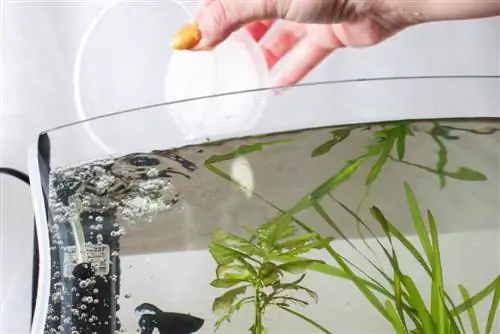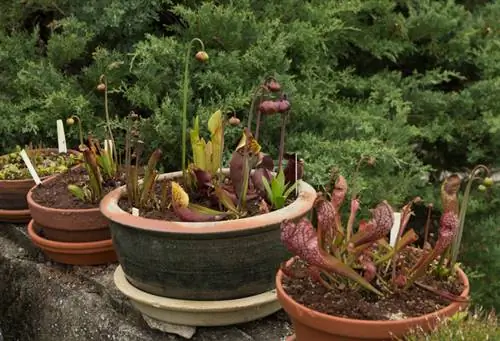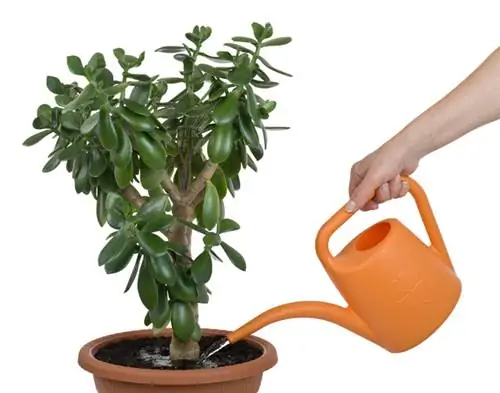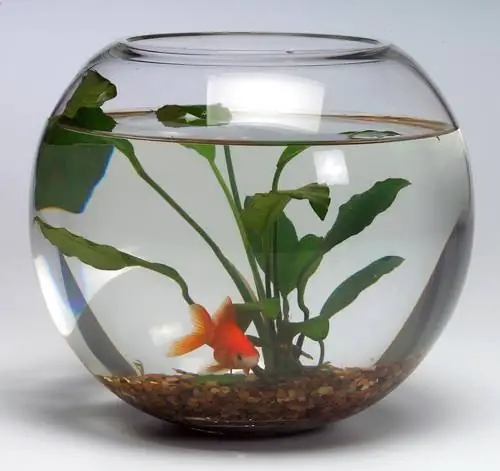- Author admin [email protected].
- Public 2023-12-16 16:46.
- Last modified 2025-06-01 06:02.
Aquarium plants place high demands on the supply of nutrients. Even small deficits cause unmistakable deficiency symptoms. These tips reveal how you can recognize a deficiency in good time and compensate for nutrient gaps. This is how you properly fertilize aquatic plants in the aquarium.
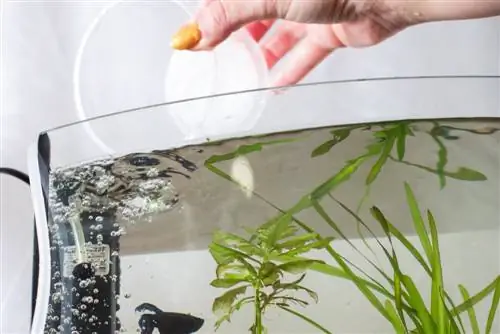
How should you fertilize aquarium plants?
How do you fertilize aquarium plants? Fertilizing as needed helps compensate for nutrient deficiencies. Look out for deficiency symptoms such as yellowed leaves and stunted growth. Use special fertilizers for aquarium plants, such as liquid universal fertilizers or long-term depot fertilizers. After the break-in phase, adjust the amount of fertilizer to the plant growth.
Fertilize aquarium plants as needed - tips
Fertilizing according to a firmly cemented schedule does not do justice to the special nutrient situation in the aquarium. In the worst case, there is a risk of over-fertilization with life-threatening consequences for plants and fish. Fertilizing as needed avoids this problem. If these deficiency symptoms are observed, your aquarium plants are calling for food:
- Yellowed shoot tips in the early stages
- Yellow leaves and pale colors
- Green leaves with yellow veins, especially on Anubias
- Algae colonize plant leaves and shoots
- Stunting
Aquaristics beginners can remedy the noticeable nutrient deficit with a fertilizer from a specialist retailer. Alternatively, measuring the water values provides precise information about which nutrients the aquarium plants are missing for lush green, lush growth.
Use special fertilizer for aquatic plants
Main nutrients such as nitrate or phosphorus enter the aquarium with the fish food and are often present in abundance. In contrast, there is a lack of important trace elements such as iron or potassium. Only a special fertilizer for aquarium plants can close these gaps. Short-term liquid fertilizers or long-acting depot fertilizers can be purchased from specialist retailers. The following list names a product selection:
- Universal fertilizer in liquid form, e.g. B. Plant Elixir from Dennerle (€13.00 at Amazon) or Aqua Rebell Makro Basic from Aquasabi
- Long-term fertilizer as a capsule or tab, e.g. B. Powertabs root fertilizer or Tropica fertilizer capsules
- Special fertilizer for strong light aquariums, e.g. B. Scarper’s Green or Aqua Rebell Makro Basic Estimative
- Nutrient reactivator, e.g. B. PlantaGold 7 to activate unused nutrients in the water
If you don't want to leave anything to chance when fertilizing your aquarium plants, use system fertilization from Dennerle. The basic fertilizer E15 FerActiv iron fertilizer is supplemented by the Complete special fertilizer V30 and the Vitamix S7. A special doser that is installed in the aquarium ensures the optimal dosage. So much fertilizer convenience comes at a price. In return, worries about proper fertilization when caring for aquatic plants in the aquarium are a thing of the past.
Tip
One week after being introduced, young aquarium plants receive their first portion of nutrients. Please adjust the dosage to the low plant mass. Reduce the manufacturer's quantities to one third. After the aquarium has run in, increase the amount of fertilizer gradually, depending on the progress of growth.

